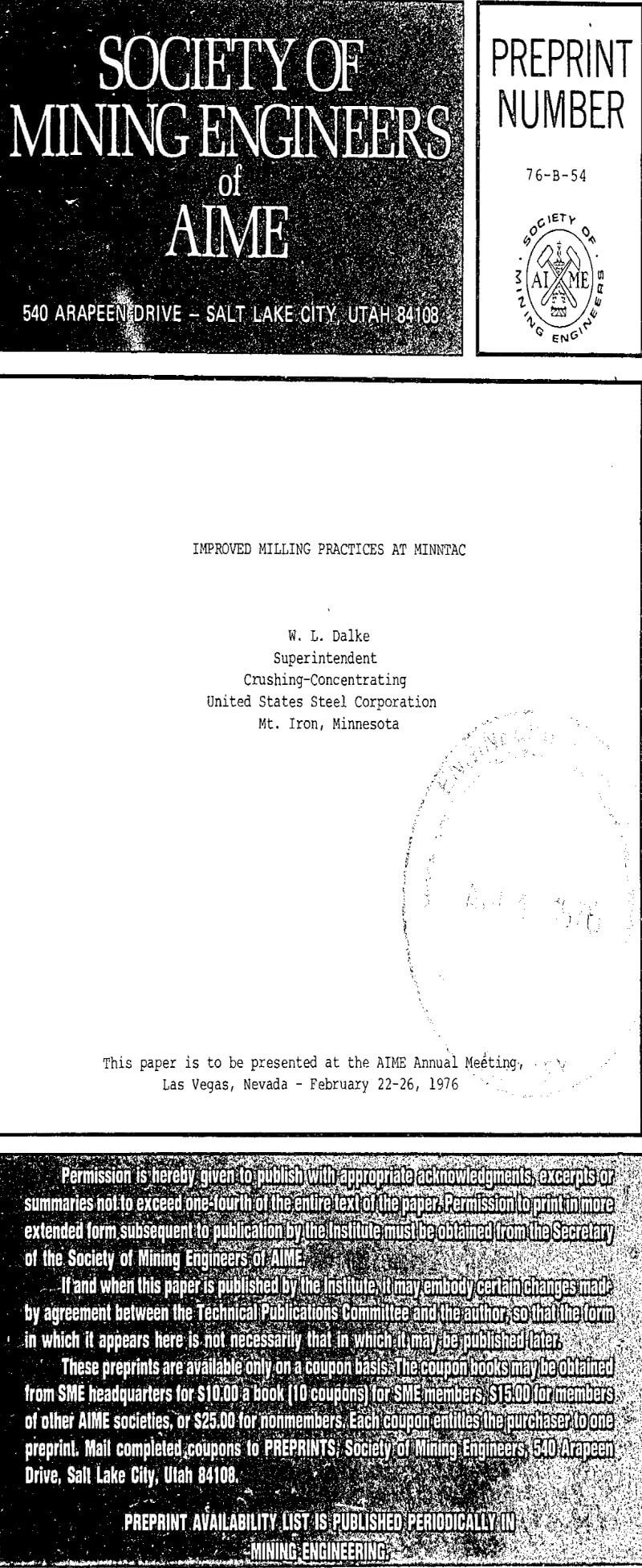The minntac complex is a facility for production of iron ore pellets located on the mesabi range at mountain iron, minnesota. It consists basically of a mine, crushing plant, concentrator, and a pelletizer producing twelve and one-half million tons of pellets annually. This paper deals with some of the aspects of the grinding circuits; but prior to that discussion, it might be well to briefly describe the flow of material in the operation.
Crushing is done in three stages. Originally, two 60″ primary crushers; four 7-foot standard secondary crushers; and six 7-foot short head tertiary crushers were installed. When the plant was expanded to double its capacity, five secondary and ten tertiary crushers were added. These were duplicates of the original 7-foot standard and short head crushers used in the original construction.
Six grinding lines were installed in the original construction. Six fourteen feet in diameter by twenty feet long rod mills are followed by six primary and six secondary ball mills. The ball mills are fourteen feet in diameter by twenty-two feet long, in the expansion, the diameter of the rod mill was increased one foot to fifteen feet, the length remained at twenty feet, the ball mills remained the same size, this expansion included six additional grinding lines. Magnetic separation takes place after each stage of grinding, the ball mills are in closed circuit with cyclones, the final product is ground to 90% – 92% minus 279 mesh and contains 65% iron with a 5,2% silica. The final concentrates are then pelletized in an allis-chalmers grate-kiln system.
It was found that the rod mill feed should not exceed 30% +½ inch; and if this screen analysis were adhered to, the rod mill would discharge a product that could be handled in the primary ball mill. A typical screen analysis of the rod mill discharge is as follows:
+ 4 Mesh – 3.0%
– 10 Mesh – 67%
– 20 Mesh – 50%
– 100 Mesh – 24%
Originally, rod mill feed rates approached 300 TPH. However, at the weight recovery ore being mined, rates up to 400 TPH were required to satisfy the demands of the entire system.
Finally, and of greatest concern, was the damage to shell liners caused by the higher charge. Rods were cascading into the shell liners before dropping into the mill pulp, this caused the shell liners to break prematurely, a condition which could not be tolerated, consequently, the charge level was reduced and as a result power and feed rates dropped.
As stated earlier, the original speed was at 65 – ½% of critical and this was obtained by using a 19-tooth pinion. Twenty, twenty-one, and twenty-two-tooth pinions were purchased. These pinions would increase the speed from 65½% to 69%, 72.5%, and 76% respectively.

